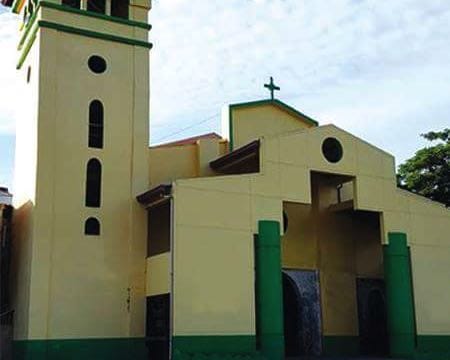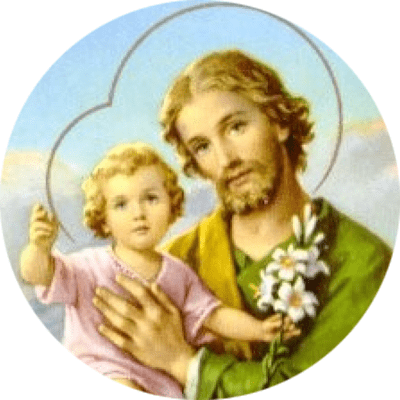.
ST. JOSEPH PARISH
6519 Barugo, Leyte
Contact:
+63 917 105 1756

HISTORY (read...)
(Excerpts from the Municipality of Barugo Files thru the courtesy of Mrs. Felina A. Avestruz and Barugo 2004 Fiesta Souvenir Program thru the courtesy of Mrs. Nene Aruta)
The education of the natives in Leyte started with the arrival of the Jesuits on July 16, 1595 in Carigara headed by Fr. Pedro Chirino. The Christianization of Barugo was under Carigara under the care of Fr. Mateo Sanchez who eventually became its first Parish Priest in 1612.
The site of the first Church was situated in Brgy. Tutug-an for this certain barangay was the Town’s Central District during that time. The particular site is now called as sitio “Nasunugan” to remind us that the place was burned (including the church) by the Moro Invaders.
The account of missionary works of the Jesuits, as recorded by Fr. Chirino tells of an interesting experience of Fr. Mateo Sanchez. It was Fr. Mateo Sanchez who established the first church in Barugo a Mission Church under Carigara. Fr. Chirino wrote: “The Superior, who is Fr. Mateo Sanchez took charge of the newer towns in order to build churches there, thus establishing a proper foundation for Christian life, as he did in the town of Lingayon and elsewhere. On his way there he baptized twenty five adults in Barugo and sixty three in Carigara.”
The Jesuit missionaries stayed in Leyte from 1565 up to 1767. During that time they expanded their influence starting from Carigara and Barugo into the hinterlands up to Ogmuc, Dulac, Palo, Alangalang, Malibago and the entire island of Cibabaw (Samar).
When Charles III of Spain ordered the expulsion of the Jesuits from all Spanish dominions in 1767, the decree reached the Philippines only a year later. The Jesuit missions were then handed over to the Agustinian fathers and later to the Franciscan friars. Fray Timoteo Calderon was the First Franciscan curate assigned to Barugo. In 1863 Rev. Fr. Bernardino Rebolledo who was a young Parish Priest at the age of 26 assigned in Barugo constructed a new church made of nipa, similar to his residence (Parish Rectory), dedicated to St. Joseph, the Titular Patron of the Parish.
In 1899 the Parish of Barugo was then handed over to the care of the secular/diocesan priests and Rev. Fr. Ignacio Mora was the first Parish Priest.
During the time of Rev. Fr. Loreto Amante the 41st Parish Priest of Barugo, he made a study to establish a mission station due to the increasing Catholic population of Barugo and to address the Pastoral and Spiritual needs of the parishioners. The resolution was approved by the priests of the Vicariate of Carigara and finally by Archbishop Jose Palma, DD, SThD the then Metropolitan Archbishop of Palo. The Mission Station carved out from the Parish is the Santa Rosa de Lima Mission Station, Sta. Rosa, Barugo, Leyte. The first Mission priest assigned was Rev. Fr. Ronilo Barreda.
If ask, why the town is called BARUGO, the history tells us this legend: “Once upon a time there was a a man named “Kasadok” while resting by the river bank under the shade of a giant tree, a certain spaniard came along and ask the name of the place. Kasadok did not understand spanish and thinking that the spaniard was asking the name of the big shady tree, he answered back “BALUGO”. From that time on the place came to be known as “BALUGO”.
When the americans came, they changed the letter “L” to “R” and thus to this day the town is called “BARUGO “. The story has no basis in fact and is simply a legend.
Another account is also being told, that the Spanish missionary priest who was stationed in a certain place called “BALUGO” had a difficulty in pronouncing the Balugo, instead he pronounced BALUGO as BARUGO. It is known that the spaniards could hardly pronounced letter “L”, instead they pronounce it as “R” even until now.
So the place called “BALUGO” was then changed to “BARUGO”. Based from an old Map of the Province of Leyte as early as 1690, the place BARUGO already existed on the said Map.

